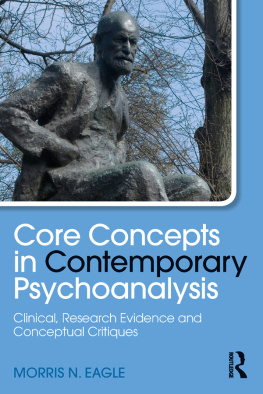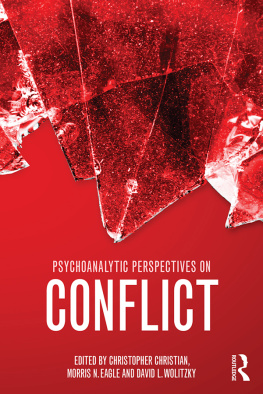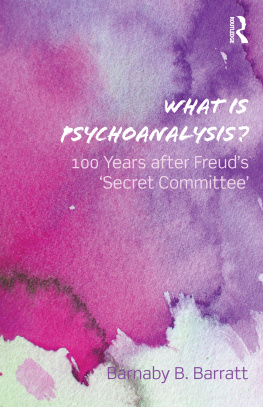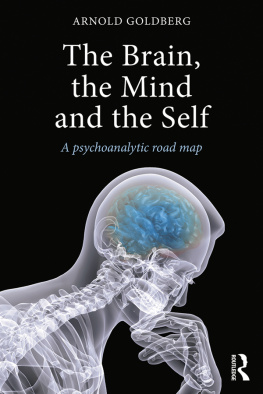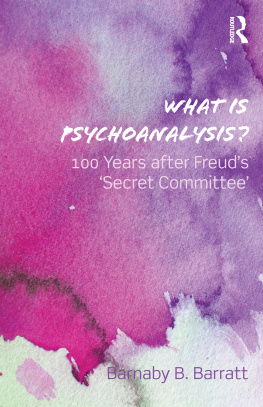From Classical
to Contemporary
Psychoanalysis
A critique and Integration
MORRIS N. EAGLE
| Routledge | Routledge |
| Taylor & Francis Group | Taylor & Francis Group |
| 270 Madison Avenue | 27 Church Road |
| New York, NY 10016 | Hove, East Sussex BN3 2FA |
2011 Taylor and Francis Group, LLC
Routledge is an imprint of Taylor & Francis Group, an Informa business
Printed in the United States of America on acid-free paper
10 9 8 7 6 5 4 3 2 1
International Standard Book Number: 978-0-415-87161-7 (Hardback) 978-0-415-87162-4 (Paperback)
For permission to photocopy or use material electronically from this work, please access www.copyright.com (http://www.copyright.com/) or contact the Copyright Clearance Center, Inc. (CCC), 222 Rosewood Drive, Danvers, MA 01923, 978-750-8400. CCC is a not-for-profit organization that provides licenses and registration for a variety of users. For organizations that have been granted a photocopy license by the CCC, a separate system of payment has been arranged.
Trademark notice: Product or corporate names may be trademarks or registered trademarks, and are used only for identification and explanation without intent to infringe.
| Library of Congress Cataloging in Publication Data |
| Eagle, Morris N. |
| From classical to contemprorary psychoanalysis : a critique and integration / |
| Morris N. Eagle. |
| p. cm. -- (Psychological issues) |
| Includes bibliographical references and index. |
| ISBN 978-0-415-87161-7 (hbk. : alk. paper) -- ISBN 978-0-415-87162-4 (pbk. : |
| alk. paper) -- ISBN 978-0-203-86855-3 (e-book) |
| 1. Psychoanalysis. I. Title. |
| BF173.E156 2011 |
| 150.195-dc22 | 2010028742 |
Visit the Taylor & Francis Web site at
http://www.taylorandfrancis.com
and the Routledge Web site at
http://www.routledgementalhealth.com
Contents
PART I.
Freudian theory |
PART II.
Contemporary psychoanalytic theories |
PART III.
Overview and integration |
| Index |
Preface
The last 40 or so years have witnessed a period of great ferment in psychoanalysis. New theories have appeared that seem to constitute radical departures from traditional theory. What is the nature of the major developments that have taken place during this time, and how does one understand them? What alternative formulations and perspectives are being proposed in these contemporary theories? Are there grounds for at least a partial integration between traditional and contemporary theories, as well as among different contemporary theories? These are some of the questions that will be addressed and clarified in this book.
There is little doubt that reactions to various aspects of Freudian theory constitute the major point of departure for contemporary psychoanalytic theories. Therefore, an adequate contextual understanding of these newer formulations and ideas will be facilitated by a full grasp of the fundamentals of Freudian ideas. Accordingly, I begin this book, in Part I, with a lengthy introductory chapter in which I elucidate the basic tenets of Freudian theory as a foundation for understanding contemporary developments. Thereafter, the book is organized around four fundamental topics of psychoanalytic theory and practice:
- Conceptions of mind
- Conceptions of object relations
- Conceptions of psychopathology
- Conceptions of treatment
of the book, consisting of five chapters, spells out how Freudian theory addresses each of these topics.
In an attempt to understand the trajectory from classical to contemporary views, in (an otherwise overly long section on conceptions of treatment is divided into two chapters).
of the book consists of a single long chapter devoted to an attempt to delineate some areas of divergence and convergence among different psychoanalytic theories and to point to the possibility of at least partial integration among different psychoanalytic perspectives.
Although I refer to other approaches, my focus is on the object relations theory of Ronald Fairbairn, the relational theory of Stephen A. Mitchell, the self psychology theory of Heinz Kohut, and the intersubjective theory of Robert Stolorow and his colleagues. My friend and colleague Stephen Portugues has pointed out to me that I have omitted what one might refer to as contemporary ego psychology (e.g., represented by Paul Gray, 1994, and his followers), the modern Freudians (see Ellman, Grand, Silvan, & Ellman, 1998), and the contemporary Kleinians (see Schafer, 1997) and therefore leave the impression that what is contemporary in psychoanalysis is entirely constituted by the theories I cover in the book. Although I think Portugues has a valid point, I focus on these theories because in contrast to the other theoretical perspectives that he has identified, they represent the most radical departures from and challenges to classical psychoanalytic theory. I also think it is fair to say that these theories are more representative of the current zeitgeist. Finally, if psychoanalysis is to achieve any degree of unity, it is these theories that constitute the greatest challenge to integration and therefore need to be more fully confronted.
Although there are differences in how these contemporary psychoanalytic theories address the fundamental topics listed above, there are a number of themes that recur: a rejection of drive theory, a relative de-emphasis of insight and self-knowledge, reconceptualization of unconscious processes and defense, de-emphasis of inner conflict, a reconceptualization of transference and countertransference, alteration of the analytic stance, and an emphasis on environmental failure. You will see these themes emerge again and again as I explore how each theory addresses the four fundamental topics listed above.
WHAT THIS BOOK IS AND WHAT IT IS NOT
Let me say a word or two regarding what this book is not about. There are relatively few clinical vignettes included and even fewer accounts of my clinical experiencesfor example, my personal reveries during clinical sessions. I know from my experience with graduate students and analytic candidates that these accounts can be very stimulating and evocative, particularly when they also possess a modicum of literary quality and a dose of what one might call aesthetic ambiguity. However, I do not believe that these sorts of accountsevocative though they may bewill advance our field. I think this is so for a number of reasons. One reason is that for the most part, I do not believe that published accounts of clinical material, based on recollection and notes, necessarily constitute reliable indications of many of the critical phenomena that take place in sessions, including subtle expressions of tone, phrasing, gestures, timing, and so on. Instead, as Spence (1987) has pointed out, readers get smoothed out, normalized, and highly selected versions of analysts and patients productions and interactions. The discrepancy between what is reported in good faith and what actually takes place in psychotherapy sessions has become especially clear to me in recent supervision I have carried out that includes the availability of videotaped sessions. There is a great deal going on in the sessions of which the therapist is not and perhaps cannot be aware.


